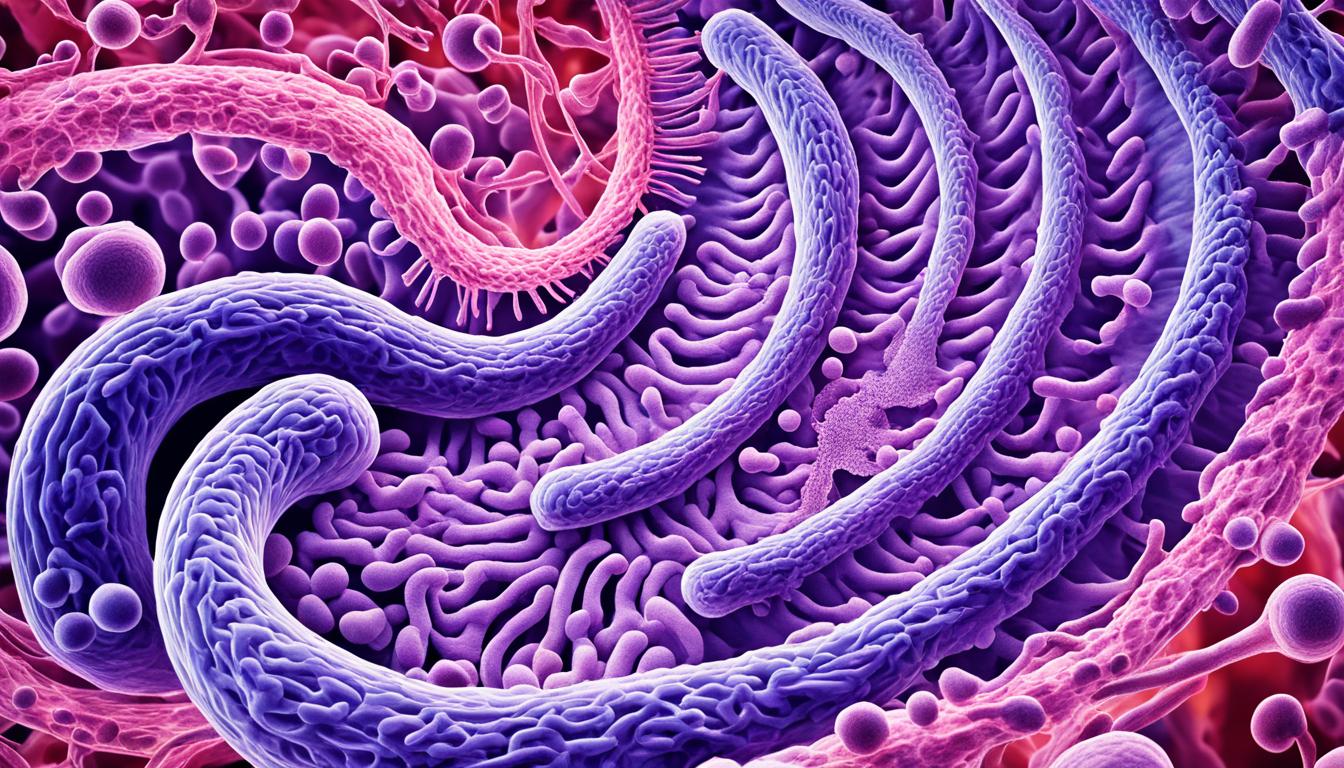Microscopic colitis is a type of chronic inflammatory bowel disease. It affects the colon and leads to chronic diarrhea and inflammation. It’s of two types: collagenous colitis and lymphocytic colitis. Mainly, it affects women. Also, it can be wrongly identified as celiac disease or irritable bowel syndrome.
Diagnosing microscopic colitis often relies on looking at samples of colon tissue. A colonoscopy helps make sure it’s not another problem. This test is key in identifying the disease clearly and finding the right treatment. Distinguishing it from other diseases is essential for managing it correctly and easing symptoms.
Treatments for microscopic colitis vary. They can include corticosteroids and antidiarrheal drugs. Probiotics, mesalazine, and other drugs that influence the immune system might also be used. The treatment choice depends on the patient’s particular needs.
Key Takeaways:
- Microscopic colitis is a chronic inflammatory bowel disease characterized by chronic diarrhea and inflammation of the colon.
- It primarily affects women and can be mistaken for other gastrointestinal disorders.
- Diagnosis involves histopathology and may require a colonoscopy to rule out other conditions.
- Treatment options include corticosteroids and other medications, along with advancements in stem cell therapy.
- Proper diagnosis and treatment can help alleviate symptoms and improve overall well-being.
Classification and Clinical Symptoms of Microscopic Colitis
Microscopic colitis is serious and comes in two kinds: collagenous and lymphocytic colitis. Both share similar signs, which can make diagnosis hard.
People with these types suffer from ongoing diarrhea. They have loose or watery stool and many urgent bathroom trips. Some might even have trouble controlling their bowel movements. This condition can last for over four weeks and really mess with people’s lives.
Feeling belly pain is also common with microscopic colitis. But, this pain can be hard to tell apart from other gut issues like irritable bowel syndrome.
Collagenous and lymphocytic colitis look much the same in the clinic. So, it’s tough to tell them apart without looking at colon tissue under a microscope.
Comparison of Collagenous Colitis and Lymphocytic Colitis
| Collagenous Colitis | Lymphocytic Colitis | |
|---|---|---|
| Primary Symptoms | Chronic diarrhea | Chronic diarrhea |
Though diagnosing these illnesses is a challenge, it’s vital for doctors to do it right. Knowing which kind of microscopic colitis a patient has helps choose the best treatment. This can make things better for the patient.
Diagnosis and Role of Gastroscopy
To diagnose microscopic colitis, doctors look closely at tissue samples from the colon. A full colonoscopy is done. It checks the colon and takes tiny pieces for tests.
During the colonoscopy, a doctor might see the issues linked to microscopic colitis. They can see things like more blood vessels, unclear vessel shapes, sores, or swollen areas. These signs help confirm the disease.
They also take samples from different parts of the colon. This gives a better chance to clearly see what’s happening. It makes the diagnosis more sure.
| Endoscopic Lesion | Frequency |
|---|---|
| Vascular Proliferation | 70% |
| Unclear Mucosal Vascular Morphology | 50% |
| Longitudinal Ulcers | 40% |
| Regional Edema | 30% |
Treatment and Conclusion
Treating microscopic colitis uses many different methods. The goal is to lessen symptoms and make life better for the patient. Doctors often give corticosteroids like budesonide to cut down on swelling and control diarrhea. These medicines are key in handling the disease and helping patients feel better.
There are more ways to treat it besides steroids. Doctors may recommend drugs to stop diarrhea, probiotics, and mesalazine to help with bowel issues. Some patients might also take certain drugs that affect the immune system to lower swelling.
Stem cell therapy is an exciting new possibility for treating microscopic colitis. It’s still early, but this approach seems to work in lowering swelling and helping damaged tissues heal. Scientists are now studying this therapy more in depth to see how well it works.
In wrapping up, microscopic colitis is a type of chronic bowel disease that needs careful handling. Treatments like steroids, antidiarrheal drugs, and even stem cell therapy can make symptoms better. With more research, we hope to find even better ways to treat and manage this illness, improving the lives of those with microscopic colitis.

